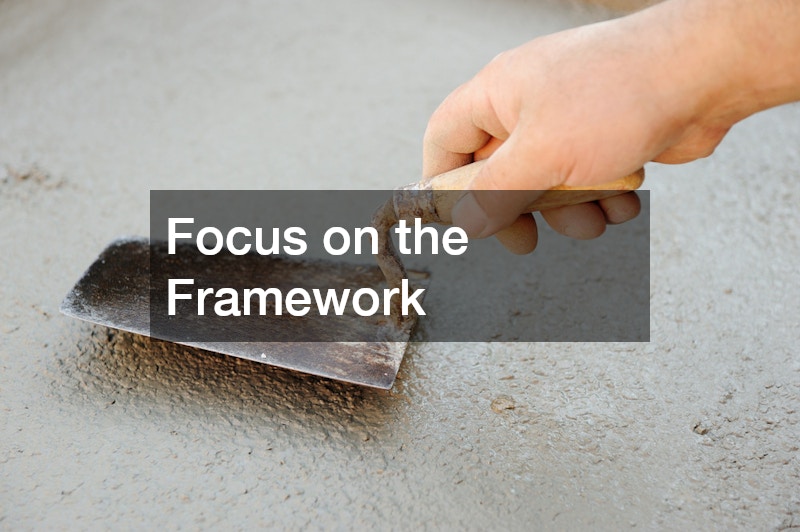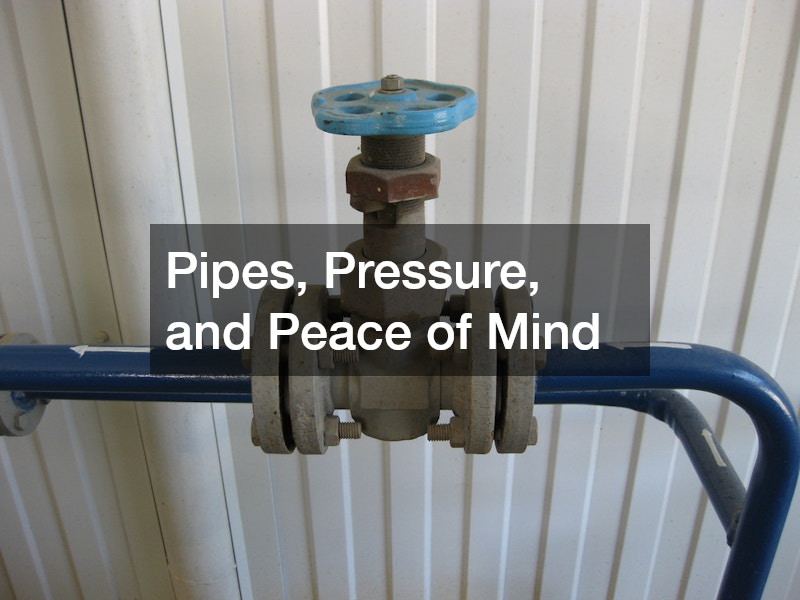Moving into a new home is often a time of excitement, anticipation, and fresh beginnings. But before you pack your last box and turn the key in the lock, it’s important to make sure your new residence is truly move-in ready. Too often, homeowners delay necessary upgrades or overlook essential home maintenance tasks in the hustle of relocation. However, there are numerous benefits to taking care of home improvement projects before you move in. This proactive approach can save you time, money, and stress in the long run.
Unoccupied homes provide a unique opportunity for repairs and upgrades to be completed efficiently. Without furniture in the way or daily life to work around, contractors can work faster, and you can plan more effectively. From structural fixes and efficiency improvements to cosmetic touches that personalize your space, now is the ideal time to invest in your property’s potential.
This blog will explore twelve key areas of home improvement that you should consider addressing before moving day. These recommendations range from foundational and structural concerns to interior finishes and landscaping. Whether you’re moving into a newly purchased home or one that’s new to you, these improvement ideas are designed to enhance your comfort, increase your property value, and prevent future headaches.
We’ll also integrate expert advice and practical insight from professionals in relevant fields—without overwhelming you with technical jargon. By the end, you’ll have a comprehensive checklist of pre-move improvement ideas to guide your next steps. Let’s dive into what you should take care of before settling into your new home.
1. Focus on the Framework

Before bringing in boxes or furniture, it’s essential to inspect the bones of your house. The foundation, support beams, and major structural elements must be sound. If there are cracks in the basement walls or uneven floors, this might indicate larger issues beneath the surface. Addressing these concerns now is far easier than doing so once the home is occupied.
Professional foundation repairs should be scheduled immediately upon discovering any signs of shifting or settling. Ignoring these problems can lead to water damage, pest infestation, or worse—collapsing walls over time. In addition to protecting your investment, having a solid framework provides peace of mind.
Even if the structure appears solid, consulting with general contractors can help assess any hidden concerns and recommend proactive reinforcement. Starting with the foundation ensures every other home improvement project builds on a strong base. When looking at overall improvement ideas, prioritizing structure ensures everything else stands the test of time.
2. Keep the Water Flowing Properly
Water damage is one of the most common and costly issues homeowners face, and much of it starts with the roof and gutters. Before moving in, check your roof for missing shingles, leaks, or signs of aging. Hiring experienced roofing companies to inspect and repair any issues can prevent future water intrusion.
Likewise, a fully functional gutter system is critical. If the gutters are clogged, broken, or improperly sloped, rainwater can flow toward your home instead of away from it, leading to foundation issues or flooded basements. Investing in a quality gutter repair service can correct these issues before they escalate.
As you evaluate potential improvement ideas for your new home, managing water from the top down should be high on your list. Taking these steps now will prevent unexpected expenses during your first storm season in the house.
3. Walls That Work for You
Your interior walls do more than separate rooms—they insulate, support electrical wiring, and contribute to your home’s aesthetic. Before you move in, inspect them closely. Cracks, holes, or water stains could be signs of hidden issues.
This is the perfect time to call in drywall contractors to patch and refinish walls. Not only can they make your interiors look brand new, but they can also identify deeper concerns such as water leaks or mold. A fresh coat of paint after repairs gives your home a personalized touch from day one.
Drywall improvements may not be the flashiest, but they’re some of the most practical improvement ideas you can implement. Addressing these before hanging art or placing furniture ensures a clean, polished look in every room.
4. Don’t Forget the Exterior Appeal

Curb appeal often plays a major role in home value and first impressions, but it’s also about protection and durability. Before settling in, examine your home’s siding for cracks, rot, or other damage. A professional siding contractor can help you determine whether a repair or full replacement is needed.
The condition of your siding impacts more than looks. Damaged siding allows moisture and pests to enter your home and may even decrease energy efficiency. Getting ahead of these problems is crucial, especially before interior improvements begin.
In terms of improvement ideas that combine practicality and aesthetics, siding improvements offer a strong return on investment. Plus, you’ll be starting off with a home that looks as good on the outside as it feels on the inside.
5. The Ground Beneath Your Feet
Outdoor improvements may seem secondary, but if your new home has uneven terrain or poor drainage, landscaping becomes more than cosmetic. Hardscaping elements like patios, walkways, or retaining walls should be addressed early, especially if they impact water flow or access to the home.
Professionals who specialize in hardscaping can help regrade slopes, add durable outdoor features, and ensure your property’s exterior is functional and safe. Completing these projects before move-in prevents disruptions to your daily life later.
Among the most strategic improvement ideas, hardscaping not only boosts your home’s appearance but also reduces long-term maintenance. Plus, with these outdoor features in place, you can enjoy your yard right away.
6. Efficient Comfort From Day One
Energy efficiency isn’t just about saving money—it’s about comfort and convenience. One often overlooked area before move-in is the home’s heating and cooling system. While not always visible, it has a big impact on daily living.
Before settling in, have your system inspected and tuned by a technician. This is especially important for older homes, where previous maintenance may have been sporadic. If heating repair is necessary, take care of it now so you’re not stuck without warmth in the colder months.
Of all possible improvement ideas, improving your HVAC system ensures consistent comfort and better air quality. Plus, it’s easier to service equipment without having to work around your furniture.
7. Pipes, Pressure, and Peace of Mind

Plumbing issues can go from minor inconvenience to major disaster quickly. Before moving into your new home, it’s a smart idea to bring in a licensed plumber to assess all water-related systems. Leaks, clogs, or poor water pressure can often be traced back to older pipes or worn-out fixtures.
Having plumbing repairs done before move-in can prevent emergencies and expensive water damage. It’s also a great time to replace old fixtures or upgrade systems for efficiency.
Plumbing may not be glamorous, but it’s one of the most essential improvement ideas to prioritize. With everything working smoothly, you’ll enjoy peace of mind from the first time you turn on a faucet.
8. A Safer and Cleaner Source of Warmth
If your new home has a fireplace or wood stove, it’s important to ensure it’s safe to use. Many homeowners overlook chimney maintenance, assuming that past owners kept up with it. However, that’s not always the case.
A thorough chimney inspection can uncover creosote buildup, cracks in the flue, or animal nests—all of which pose serious fire hazards. Scheduling chimney repair before move-in ensures the system is clean, efficient, and ready for use.
Among your list of home improvement ideas, chimney safety may not be first, but it’s certainly vital. Handling it early can prevent dangerous situations and give you the cozy fireside experience you’re hoping for.
9. Dry Inside, No Matter the Weather
Basements and crawl spaces are notorious for moisture problems. Whether it’s from rain, plumbing leaks, or high humidity, excess water can damage belongings and threaten your home’s structure. Proper sealing and ventilation are key to long-term dryness.
Improvement ideas for below-grade spaces often include waterproofing, sump pump installation, and vapor barriers. Even if you don’t plan to use the basement right away, handling these issues now saves you time and money later.
A dry lower level also improves indoor air quality, making your whole home healthier. Don’t wait for the first big storm to expose a problem—address moisture control before move-in.
10. Make the Most of Your Lighting

Good lighting changes everything—from how you feel in a space to how functional it is. Updating fixtures and installing dimmers or smart switches are quick improvements that go a long way.
If certain areas of your new home feel too dark or dated, consider upgrading them before you move in. These improvement ideas can be handled in a day or two, especially with no furniture in the way. It’s an easy way to put your personal touch on your space right from the beginning.
11. Paint With Purpose
Painting might seem like a cosmetic upgrade, but it can influence mood, cleanliness, and even lighting. A fresh coat on walls, ceilings, or cabinets gives the home a refreshed, cohesive look. Plus, it’s far easier to paint an empty space than to work around furniture and décor.
If your move-in timeline allows, tackle this project before unpacking. Choosing colors that reflect your style makes the space feel like home immediately. This step may also reveal previously unnoticed wall issues, giving you the chance to fix them promptly.
Among the easiest and most satisfying improvement ideas, painting is cost-effective and yields instant results.
12. Put It All Together
As you plan your move, you’ll find that certain upgrades are easier and more efficient to complete before settling in. Take heating repair, for example—it’s far more convenient to service a furnace or boiler before furniture and rugs are in place. The same logic applies to structural tasks like foundation repairs, which can delay move-in if not addressed early.
Bringing in general contractors early in the process helps you build a roadmap and avoid surprises. Whether you’re coordinating roofing companies for leak prevention, drywall contractors for a flawless interior, or a licensed plumber for peace of mind, your goal is to start fresh with confidence.
Exterior concerns like siding and chimney repair might seem less urgent, but they contribute to your home’s safety and curb appeal. Gutter repair service and hardscaping ensure that water is managed properly and your outdoor space is usable from day one.
Ultimately, these improvement ideas offer more than just cosmetic benefits—they increase energy efficiency, reduce maintenance needs, and make your home feel truly yours. By addressing these elements before the big move, you invest in comfort and value that lasts for years to come.
Moving to a new home brings endless possibilities—and a lengthy to-do list. By prioritizing key home improvement tasks before you unpack, you set the stage for a smoother, more enjoyable transition. Whether it’s checking for structural soundness, ensuring the plumbing and heating systems are in top shape, or simply giving the walls a fresh coat of paint, each effort helps your new house feel like home from day one.
Don’t underestimate the impact of these early actions. Roofing, siding, foundation repairs, and even chimney inspections may seem like background issues now, but they can quickly rise to the surface if ignored. By addressing improvement ideas proactively, you reduce future headaches and avoid costly surprises.
Bringing in the right professionals—whether general contractors, drywall experts, a licensed plumber, or hardscaping specialists—ensures the job gets done right. With the house still unoccupied, these projects can be completed quickly and efficiently.
Ultimately, the goal is to feel confident and comfortable from the moment you move in. By tackling these home improvement tasks ahead of time, you’re not just investing in property—you’re investing in peace of mind. Use this guide as a roadmap, and walk into your new home with the reassurance that it’s ready to support your next chapter.
Taking the time to handle home improvements before moving in allows you to shape your space with intention. Instead of reacting to problems after they arise, you’re creating a stable, comfortable foundation for everyday life. Whether it’s the safety of a repaired roof or the aesthetic value of fresh paint, each task adds to your long-term satisfaction. In the end, proactive planning doesn’t just improve your home—it improves your entire moving experience.


